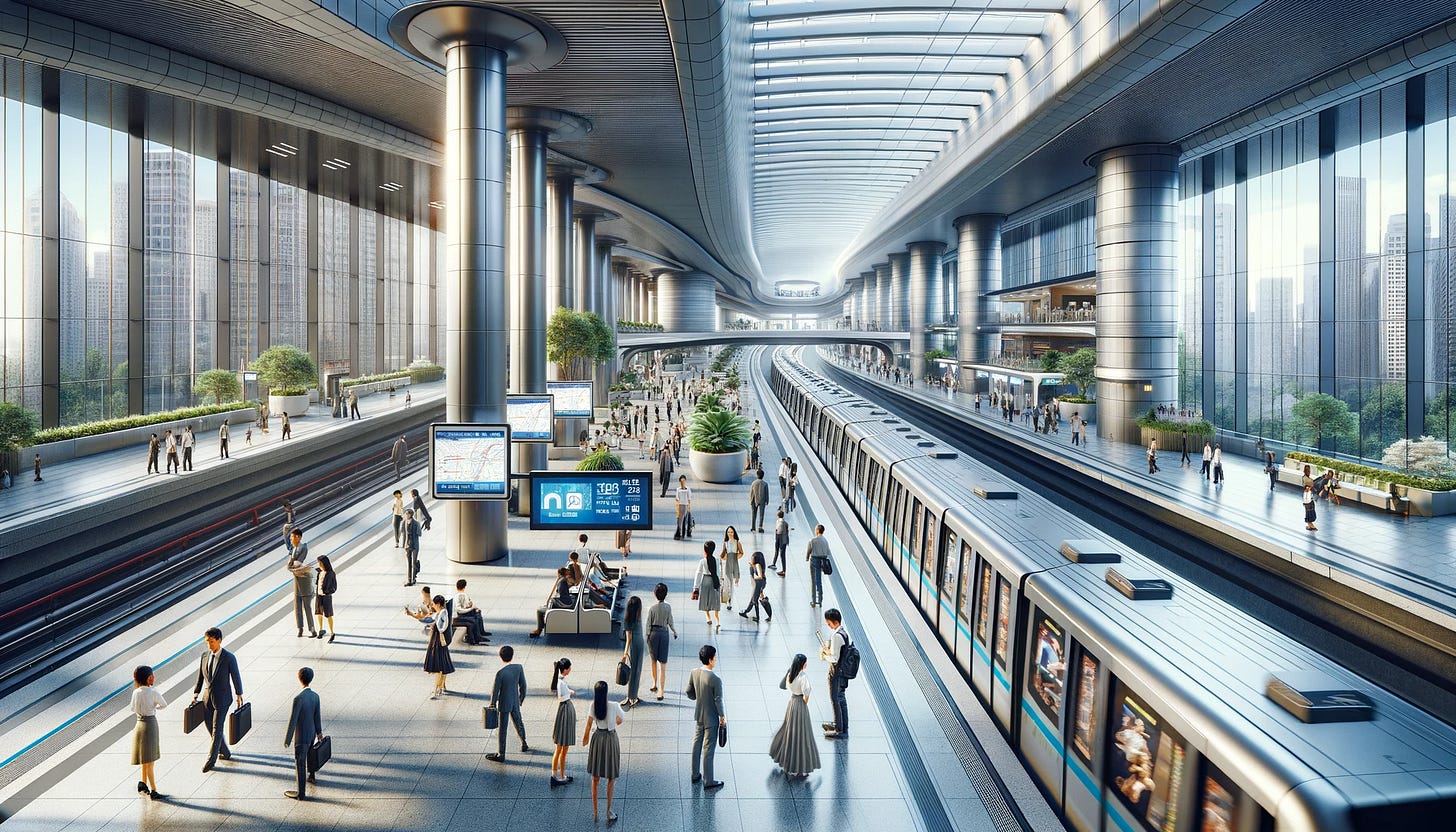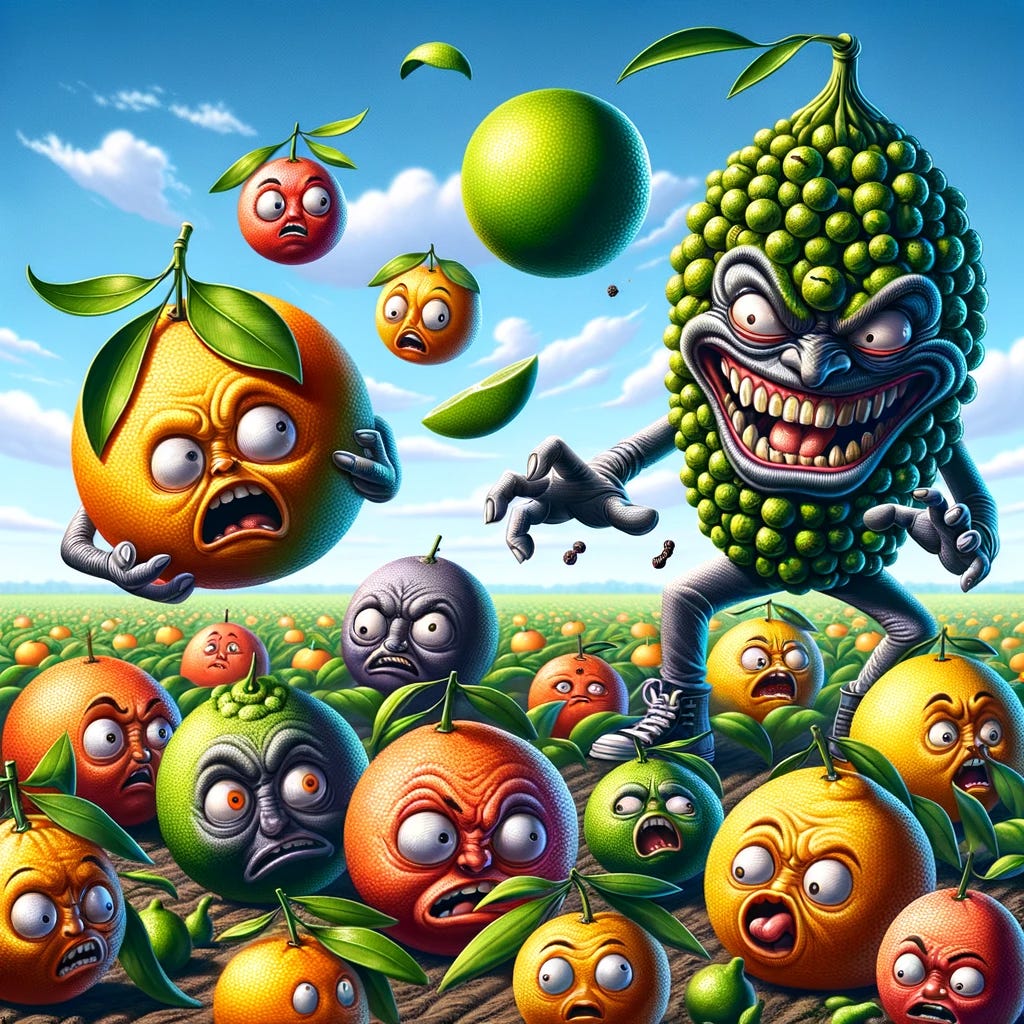RRR13: Large Metro Systems, Amtrak's "Monopoly", The Sichuan Peppercorn Embargo, Touching Base on AI, and Tyrese Maxey
🚄🚆🚂💰🥵💻🏀
Did you know the London underground metro system is 250 miles (402km) long and carries around 5 million passengers a day? 😳😳.
The first lines were built back in 1863.
In fact, most of the present day system was completed in the first 50 years of its existence. One thing that has struck me about “the tube” system is how deep underground they built it. The Hampstead station lies nearly 200 feet below ground level.
My tube research gave me an interest in learning more about other large metro systems in the world.
The top 9 longest metro systems in the world are all in China.
Number 1 is Shanghai with nearly 500 miles of coverage, and number 9 is Wuhan with a system length just shy of 290 miles.
The U.S. for all its wealth barely has any appearances on the list, with 5 listings in the top 100 (NYC, D.C., San Francisco, Atlanta, Philly) 🤨🤨🤨.
In Recent Times…
One of my friends recently posted on Instagram about how much Amtrak was charging for a ticket from D.C. to Philly (roughly 140 miles). Here’s a peek at what it would’ve cost this past Thursday at mid-day:
Keep in mind - the current average for a gallon of gas in D.C. is $3.53. Let’s assume you drive a guzzler and only get 20 miles per gallon of gas. Your cost per mile is still about 18 cents, compared to the 80 cents per mile on the $112 train.
It doesn’t check out to me that public transit between two major east coast cities should be over 4X more expensive than driving 😓.
Not only is the train exceeding how expensive it ought to be, but you’re not exactly paying for great service either. According to CATO, only 3/4ths of Amtrak trains run on time.
In my friends case, there are also no alternative train options. Unless you’re willing to jump from train to train for the better part of your day, it’s Amtrak’s way or the highway…
Did you know that Amtrak is owned by the federal government?
After a number of railroads, including Penn Central, went bankrupt, Congress stepped in to take over passenger rail by creating Amtrak in 1970. Amtrak is structured like a corporation, but the federal government owns the company’s stock. It was supposed to become self‐supporting after a transition period, but it has never earned a profit and it consumed more than $50 billion in federal subsidies over five decades to 2020.
It turns out, Amtrak may be one of the worst performing monopolies in U.S. history (besides the light blues 😉). It operates in an uncompetitive landscape yet is financially unstable.
In fiscal year 2021, Amtrak had revenues of $2.1 billion, expenses of $4.1 billion, and a loss of $2.0 billion. It had been receiving about $2 billion a year in federal aid but then received $3.7 billion in pandemic‐related aid in 2020 and 2021. Most recently, the federal Infrastructure Investment and Jobs Act of 2021 provided a huge $66 billion infusion of subsidies for rail, including direct funding of Amtrak and grants to the states for rail projects.
CATO lays out many reasons for the subpar performance, but perhaps none more nefarious than the highly subsidized long-distance routes that carry very few passengers.
The few routes that earn a return are in the Northeast, while the biggest money losers are the long‐distance routes. An analysis by Amtrak in 2018 titled “How Do Long Distance Trains Perform Financially?” found that 15 of its long‐distance trains account for 20 percent of passenger revenues but 86 percent of Amtrak’s operating losses. Revenues from the 15 long‐distance trains cover just half their operating costs, let alone any capital costs. As one example of a money loser, the average per‐passenger federal subsidy is $362 for the New Orleans–to–Los Angeles Sunset Limited.
$362 per passenger 🤯🤯🤬.
Allow Amtrak to focus on the routes with demand to improve their cost structure and service. Time for them to privatize?
Content of the Week 📖🎙📺
“From Snap Judgments to Unshakeable Beliefs” by Andy Boenau
A beautifully short, and impactful piece of writing on how stereotypes poison our perceptions of what make urban landscapes “good” or “bad”.
Maybe a residential block can be delightful even without commercial land uses on it. Maybe a city’s transit system can be robust without a light rail system or connection to regional rail. Maybe a historic district with one-way streets is still inviting and pleasant for pedestrians without converting to two-way streets.
Our ideas about projects and policy might be right or partly right or outright wrong. They might be objective or subjective. The point is to recognize that our brains will take shortcuts to draw conclusions.
What are some preconceived notions you have about what makes a city great? Mine is coffee shop density and average mbps download/upload on public wifi…
“Yes, I am a techno-optimist” by Elle Griffin
Definitely one of the more thoughtful reflections on Marc Andreessen’s recent “Techno-Optimist Manifesto”. If you’re neither a techno-optimist nor a techno-pessimist, and have no interest on the subject, you would still almost certainly find Elle’s writing very worth your time. Check her out here!
Deep Dive: The Sichuan Peppercorn Embargo (Plus Some Fun w/AI Art)
Most people would look at the above photo and say the flagrantly red, glistening chilis are the sinister actor here… but look closer 👀.
See those caramel colored, bubbly little devils? I give you, the Sichuan Peppercorn.
The Sichuan Peppercorn once found itself firmly within the crosshairs of the USDA (I mean, just look at it). For nearly 40 years, this peppercorn was the subject of a culinary embargo in the United States.
Believe it or not, this trade restriction was not a result of the peppercorns mouth-numbing tactics on the American palate, but rather an agricultural safeguard. The following is from the New York Times in 2005:
Since 1968 it has been illegal to import this spice, the dried berry of the prickly ash tree, because it might pose a threat to the American citrus industry. The trees can harbor a canker, harmless to humans but contagious among plants and for which there is no known cure. It has not been proven that the dried berries can transmit the disease but it is so devastating that about three years ago the Department began enforcing the ban in earnest.
But then…
…last year the department approved a treatment to destroy the canker, heating the berries to at least 140 degrees for 20 minutes.
Now, many spice dealers, including Adriana's Caravan in Grand Central Terminal, and several shops in Chinatown, sell Sichuan peppercorns in bags bearing labels stating that they have been heat-treated. Some stores in Chinatown sell them without the label.
I, for one, am thankful that society developed a solution for this problem (maybe Andreessen does have a point 🤣🤣).
As it turns out, the Sichuan Peppercorn and I have been the best of friends since my college days, when I started eating frequently at the Han Dynasty restaurant in the University City neighborhood of Philly.
Handling the spice, more so the numbing effect, is something you need to work at.
There are some dark days along the journey, I won’t lie to you. But once you sort of get the hang of it, there’s something euphoric about eating spicy Sichuan cuisine.
I highly recommend checking out the “Sichuan” episode of Anthony Bourdain’s parts unknown - it’s what first made me actively seek out authentic Sichuan cuisine.
In the end, the Sichuan Peppercorn isn’t a bad actor at all - it just got a bad rep all those years. Now, wonderful Sichuan flavors and U.S. citrus crops can live together in harmony, and we, the consumers, are the beneficiaries.
Catching Up With The State of Generative AI Tools
You guessed it - all the images in the Sichuan Peppercorn deep dive were generated using the latest version DALL-E. The prompts were hilarious 😂.
The developments in this space frankly happen at a pace I struggle to keep up with. I assume the same goes for anyone who doesn’t work in AI or a closely related field, so I thought I’d try to provide a dumbed down summary of which LLMs I prefer to use and for which tasks… I hope I do a decent job 🤷🏻♂️.
We should start with the big news of the weekend which is that Sam Altman has been removed at OpenAI. While not inherently about the state of the technology, this could have large implications on what happens in the industry:
Sam Altman, the just ousted CEO of OpenAI, is discussing a possible return to the company behind the ChatGPT bot even as he considers launching a new artificial intelligence (AI) venture, a person briefed on the matter said on Saturday.
A day after the board fired him in a surprise move that rocked the tech world, Altman was talking with OpenAI executives about improving the company's governance structure while he discusses with some core OpenAI researchers and others loyal to Altman how they could start a new AI company, the person said.
The possibilities of a return or a restart for Altman, seen by many as the face of generative AI, are in flux, said the source, who asked not to be named because the source was not authorized to speak on behalf of the parties involved.
OpenAI and Altman did not reply to requests for comment.
Investors in OpenAI, including its biggest backer Microsoft, are discussing damage control, including possibly pushing the board to restore Altman as CEO, fearing a mass exodus of talent without him, other sources said.
I don’t doubt that Altman would be able to raise insane amounts of capital very quickly, so we should monitor the situation and seek out clarity on what exactly happened here.
Secondly, for those of you who haven’t spent a lot of time playing with the publicly available AI tools, here’s what I think you ought to know:
OpenAI models are still the state of the art, in my opinion. The only catch is getting all the bells and whistles (access to GPT4 as opposed to 3.5, image generation from DALL-E, custom GPTs, etc.) will cost you ~$20 a month. I find GPT4 excels at all forms of writing and complex reasoning. You can get access to Chat GPT3.5 for free.
Claude2 from Anthropic is another one that I believe excels at writing, especially creative writing. It’s also good at complex reasoning. From what I understand to be true in this moment (I can’t find evidence that it’s not true), it has the largest context window (you can get a larger one with Chat GPT4 but it will cost you extra) which means it can handle extremely long and complex prompts. It’s completely free to use.
Google Bard is my favorite for compiling research. Using it like a supercharged search engine is really powerful. However, I do find it hallucinates more than other models when given other tasks, and doesn’t perform as well as others with reading / writing. Again, 100% free to use.
I haven’t quite figured out an obvious use case for Bard Extensions in my life, but it’s worth reading about them and seeing how they might be able to help you!
I want to start experimenting with some of the content summary tools called out in this list as well… If you’re not paying for Chat GPT4, it’s certainly worth checking out the image generation tools like Midjourney and others.
Do you frequently use anything I haven’t discussed? Let me know in the comments below ⬇!
Tyrese Maxey - Philadelphia Finally Has Their Starboy ⭐✨
Philadelphia sports fans carry with them an undeserved negative reputation. I find this to be especially true when it comes to the 76ers.
Philadelphia 76ers fans are truly an embodiment of the city's relentless nature. These fans deserve players who not only perform under the bright lights of the Wells Fargo Center, but who echo the city's personality.
If done authentically, players who embrace Philly's overwhelmingly positive energy don't just play for the team… they become part of a legacy woven into the very fabric of the city.
At long last, the city of Philadelphia has found a beacon of its spirit shining brilliantly on South Broad Street. He goes by the name of Tyrese Maxey.
Signs that this day would come were evident on draft night, as Maxey wailed (sort of hilariously) with tears of joy after being selected by Philadelphia.
In his first few seasons, his brilliance, as well as his readiness to embrace the city were suppressed by the Ben Simmons and James Harden situations.
Finally, the organization seemed to be teetering towards a horrific and unceremonious end to the process era after years and years of disappointment.
Yet…
Just as the founding fathers of the U.S. stood in what is now Independence Hall and refused to let the ideals of freedom and democracy be compromised, Tyrese Maxey now stands in Philadelphia and ensures the future remains bright.
Maxey’s path to prominence has finally been paved, and he and Joel Embiid together now represent one of the NBAs most dominant duos. Almost more importantly, they harbor malleable skillsets and personalities that serve as a canvas for artistry in The Center.
Together, they have restored faith in the city that even if there are more bumps along the way, Philadelphians can have a team worth supporting well into the future.
Have a great week ahead, my friends.
-Tiko








Bard is still not available in Canada, and I can't be bothered to use VPNs much... But I do have access to Claude 2 and GPT-4 Turbo and both are very impressive, with the edge going to GPT-4 Turbo right now.
Thanks for including me, Tiko. Glad you liked my stereotyping. ;)